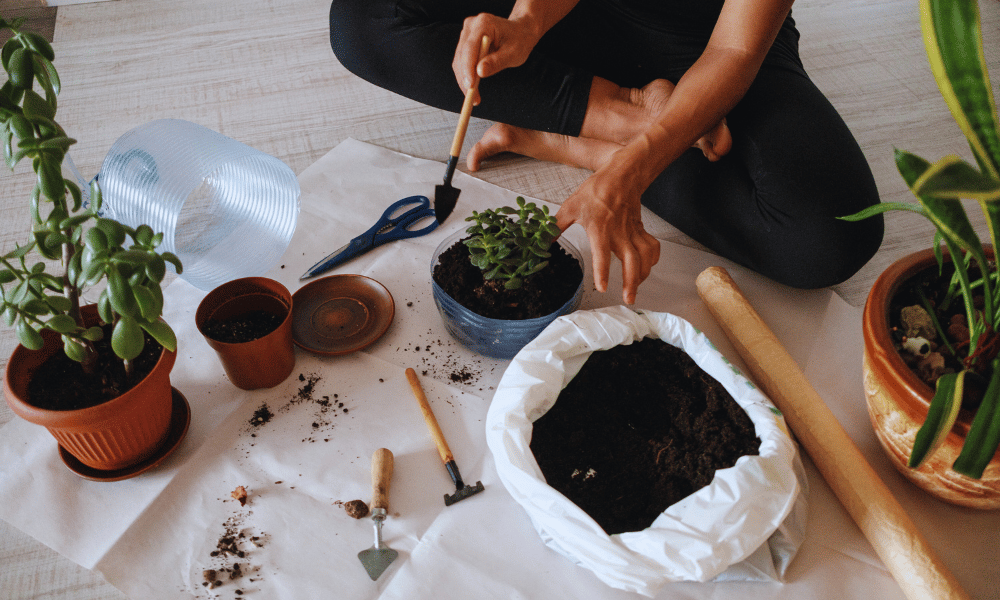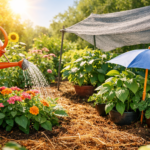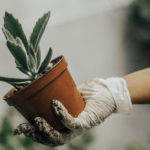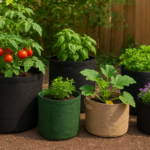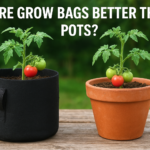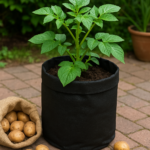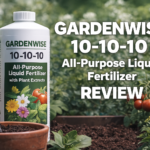When you repot an indoor plant, you’re giving it a fresh start—new soil, more space, and a chance to grow healthier roots. But does that fresh start also require an immediate nutrient boost? Many plant lovers are unsure whether feeding their green friends right after repotting is helpful or harmful. The truth lies in understanding the plant’s natural recovery process, how roots behave after being disturbed, and what kind of soil you’re using.
Just like people need rest after surgery, plants also need time to settle into their new pots. Pouring fertilizer into the soil too early can stress their already sensitive roots. However, delaying nutrients too long can stall growth. In this article, we’ll break down the signs, timing, and strategies for feeding your plants the right way post-repotting. Whether you’re a beginner or a seasoned indoor gardener, you’ll get clear, actionable advice for nurturing your houseplants back to thriving health.
Understanding the Purpose of Repotting

Repotting isn’t just about switching containers. It’s a vital maintenance step that allows plants to thrive in a healthier environment. Over time, soil in pots gets compacted, loses nutrients, and becomes less efficient at retaining water or allowing oxygen to reach roots. Repotting gives your indoor plants access to fresh soil and more space to grow, both crucial for continued health.
Why Repotting Becomes Necessary
As roots grow, they eventually outgrow their containers. When this happens, they may begin circling around the inside of the pot or even grow out of drainage holes. This is known as a root-bound condition, and it severely limits a plant’s ability to absorb water and nutrients. Besides root overgrowth, you might repot to refresh old soil or improve drainage if a plant is suffering from mold, root rot, or pest issues.
Signs Your Plant Needs Repotting
You might notice water runs straight through the pot, the soil dries out quickly, or growth has slowed. Yellowing leaves and visible roots on the surface or through the drainage holes are also indicators. In these cases, repotting becomes necessary for the plant’s survival and recovery.
What Happens to Plants During Repotting

Repotting might seem simple, but it’s a stressful event for your plant. You’re disturbing its roots, changing its environment, and sometimes trimming excess roots or dead material.
Root Disturbance and Stress
Even a gentle repotting disturbs the root system. Roots are sensitive structures; when handled, trimmed, or moved, they experience shock. This stress often results in temporary wilting or slowed growth, which is why it’s crucial to give your plant time to recover.
Transition to New Soil
New potting mix may have different moisture levels, texture, and pH. Your plant has to adjust to this new environment before it can absorb nutrients effectively. If the roots aren’t well-established yet, feeding too soon can do more harm than good.
Role of Nutrients in Plant Recovery
Nutrients are to plants what vitamins are to us—they’re essential for energy, strength, and healing. After a stressful event like repotting, plants need the right nutrients to rebuild strong root systems, develop new leaves, and support healthy growth.
Essential Nutrients and Their Functions
Plants need three primary nutrients—Nitrogen (for leaf growth), Phosphorus (for roots), and Potassium (for overall health). They also require trace elements like magnesium, iron, and calcium to support various functions.
Importance of Balanced Feeding
Balanced fertilizers help your plant bounce back without overwhelming it. Think of it as a recovery smoothie rather than an energy drink. Too much too soon can burn the roots, especially when they’re delicate post-repotting.
Should You Fertilize Immediately After Repotting?
This is one of the most common questions—and the short answer is: No, not immediately. Your plant needs time to adjust before it can benefit from added nutrients.
The Recovery Phase: First 1–2 Weeks
During the first one to two weeks after repotting, your plant is in recovery mode. It’s focusing on root healing and settling into the new soil. Introducing fertilizer during this phase can stress it further or cause nutrient burn.
Risks of Over-Fertilization
Over-fertilizing can lead to root burn, especially if the potting mix already contains slow-release fertilizers. It can also attract pests or cause nutrient imbalances. Waiting until the plant is visibly stable ensures it gets the most benefit from the nutrients you provide.
When Is the Right Time to Add Nutrients?
Patience is key when feeding after repotting. A general rule is to wait 2–4 weeks before applying any fertilizer unless your potting mix is nutrient-deficient.
Waiting for Root Establishment
Give your plant time to send out new feeder roots into the fresh soil. These roots are what absorb nutrients, and they won’t grow well if the plant is still in shock.
Visual Cues That Your Plant Is Ready
Look for signs like new leaf growth, perked-up stems, and consistent moisture retention. These indicate your plant has adjusted well and can now absorb nutrients effectively.
Choosing the Right Fertilizer
Not all fertilizers are created equal. After repotting, go for something gentle and well-balanced to avoid overwhelming your plant.
Organic vs. Synthetic Fertilizers
Organic options like compost tea or fish emulsion release nutrients slowly and improve soil structure. Synthetic fertilizers offer quicker results but must be diluted properly to prevent root burn.
Nutrient Ratios to Look For
A balanced 10-10-10 or 20-20-20 fertilizer is great for general use. If your plant needs to rebuild its roots, look for something with higher phosphorus (the middle number).
Nutrient Needs by Plant Type
Different indoor plants have varying needs after repotting. While general guidelines help, it’s smart to consider your plant’s specific characteristics. Some plants bounce back faster and can tolerate light feeding earlier, while others require a longer rest.
Tropical Plants
Tropicals like Monstera, Philodendron, or Peace Lilies thrive in rich, well-draining soil and often benefit from diluted feeding 2–3 weeks after repotting. Their roots tend to grow faster and can adapt quickly, especially in humid conditions. Use a balanced fertilizer or one with a bit more nitrogen to encourage leafy growth. But always wait for signs of new growth before feeding.
Succulents and Cacti
These desert dwellers need less nutrition overall and are extremely sensitive to over-fertilizing. Wait at least a month after repotting before feeding succulents or cacti, and even then, use a cactus-specific or diluted low-nitrogen formula. Their roots take longer to reestablish, and rich soils or added nutrients can actually cause rot or stunted growth.
Flowering Indoor Plants
Plants like African Violets, Orchids, or Anthuriums have unique feeding needs. Wait until you see buds or new leaves before applying a bloom-boosting fertilizer with higher potassium and phosphorus content. Overfeeding too soon can delay blooming or cause leaf damage.
How to Feed Plants After Repotting
Once your plant shows signs of recovery, it’s time to reintroduce nutrients—but gently. Think of it like giving someone soup after an illness, not a full three-course meal.
Liquid vs. Slow-Release Fertilizers
Liquid fertilizers are ideal post-repotting because they’re easy to dilute and absorb quickly. Start with half-strength doses to avoid stressing new roots. Slow-release pellets can also be added after a few weeks, offering nutrients over a longer period with less risk of overfeeding.
Dosage Tips for Gentle Feeding
Always follow the label—but use half the recommended dose for the first few feedings. Apply when the soil is damp, not dry, to prevent root burn. For best results, feed during the plant’s active growth season (usually spring or summer).
Mistakes to Avoid After Repotting
Even with the best intentions, common mistakes can sabotage your plant’s recovery. Avoid these pitfalls to ensure a healthy transition.
Feeding Too Early
As tempting as it is to boost your plant’s growth, fertilizing right away can do more harm than good. New roots are fragile and prone to damage from high nutrient concentrations.
Using the Wrong Fertilizer Type
Generic or strong chemical fertilizers can be too harsh post-repotting. Use a product suited to your plant type, and avoid high-nitrogen blends unless new foliage is your main goal.
The Role of Quality Potting Mix
Not all soils are created equal. The right potting mix can eliminate the need for immediate feeding altogether, giving your plant time to settle in naturally.
Pre-Fertilized Soil
Many commercial potting mixes come with slow-release nutrients that feed your plant for up to 6 months. If you’ve used one, hold off on additional fertilizing until you see signs of depletion, like yellowing or slow growth.
When Extra Feeding Isn’t Necessary
If your plant is thriving in its new pot with no signs of stress, there’s no need to rush in with fertilizer. Let nature take its course—plants often know how to pace themselves.
Natural Nutrient Alternatives
If you’re into organic or low-impact gardening, there are gentle options that provide nutrients without shocking your plant.
Compost Tea
A mild, nutrient-rich liquid made from steeped compost, this “tea” can be added a few weeks after repotting to support microbial activity and root growth. It’s gentle, safe, and effective.
Worm Castings
A small amount of worm castings mixed into the topsoil or brewed into a tea provides slow, balanced nutrients and encourages healthy soil microbes. It’s ideal for sensitive or young plants after transplanting.
Monitoring Plant Health Post-Repotting
Observation is key. Keep a close eye on how your plant is adjusting to its new home and watch for signs of both improvement and trouble.
Spotting Nutrient Deficiencies
Yellowing leaves, weak stems, and lack of new growth can signal a lack of nutrients. If these symptoms appear after the initial 2–3 week recovery window, it’s likely time to start feeding.
Encouraging Root Development
Make sure your plant isn’t sitting in soggy soil, which can hinder root growth. Instead, keep soil moist but not wet, and offer gentle light and warmth. Healthy roots are the foundation of nutrient absorption.
Long-Term Feeding Strategy for Indoor Plants
Repotting is just one part of your plant’s journey. Long-term success comes from developing a consistent, seasonal feeding plan.
Seasonal Feeding
Most indoor plants benefit from more nutrients during their active growth season—usually spring and summer. In fall and winter, reduce feeding or stop entirely, as most plants slow down naturally.
Monthly Maintenance Schedule
A once-a-month feeding with a diluted, balanced liquid fertilizer is perfect for most houseplants. Combine this with regular watering, pruning, and dusting of leaves for best results.
Conclusion
So, do indoor plants need nutrients after repotting? Yes—but not right away. Giving your plant time to settle, watching for signs of recovery, and using the right type of fertilizer at the right time is key to a smooth transition. Rushing into feeding can do more harm than good. Patience, observation, and gentle care will reward you with a thriving, vibrant indoor garden. Remember, it’s not just about nutrients—it’s about timing, balance, and knowing what your plant is telling you.
FAQs
1. Can I use compost after repotting?
Yes, but use it sparingly. Compost is rich in nutrients, and adding too much right after repotting can overwhelm tender roots. Mix a small amount into the top layer or wait a few weeks before adding.
2. Is it okay to water after repotting?
Absolutely. Watering helps settle the soil around the roots. Just make sure your pot has drainage holes and you don’t overwater—roots are fragile and prone to rot post-repotting.
3. What are signs of nutrient deficiency?
Look for yellowing leaves, slow or no growth, pale foliage, or weak stems. If these signs appear after a few weeks in fresh soil, it may be time to start light feeding.
4. Can I add Epsom salt after repotting?
Epsom salt provides magnesium, which can benefit certain plants. But use it cautiously, only after your plant has adjusted and shows signs it needs a boost—not immediately after repotting.
5. How often should I feed potted plants?
During the growing season, once a month with diluted fertilizer is ideal for most indoor plants. In fall and winter, reduce or stop feeding based on your plant’s needs.

